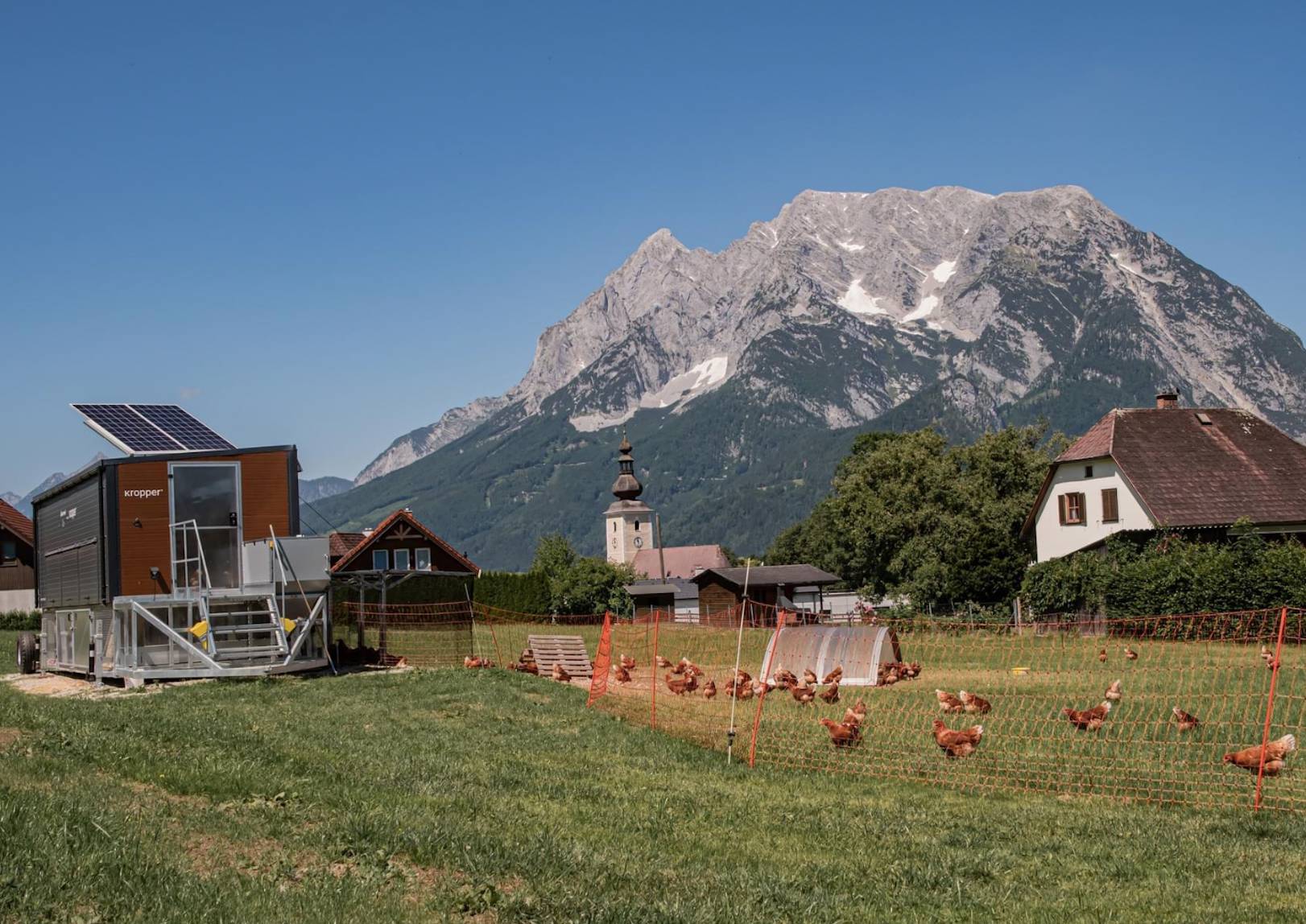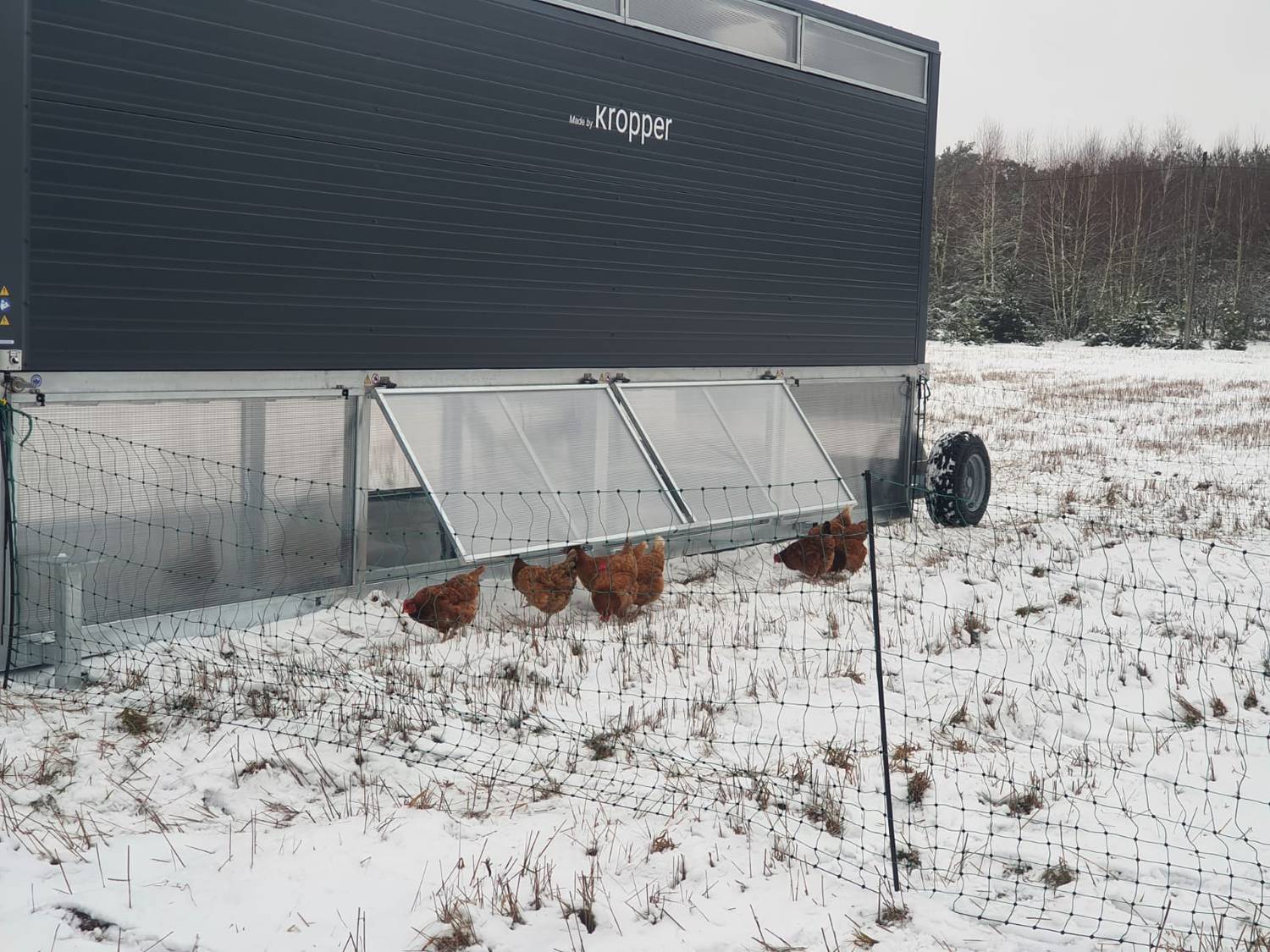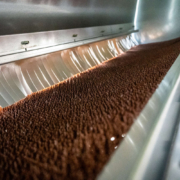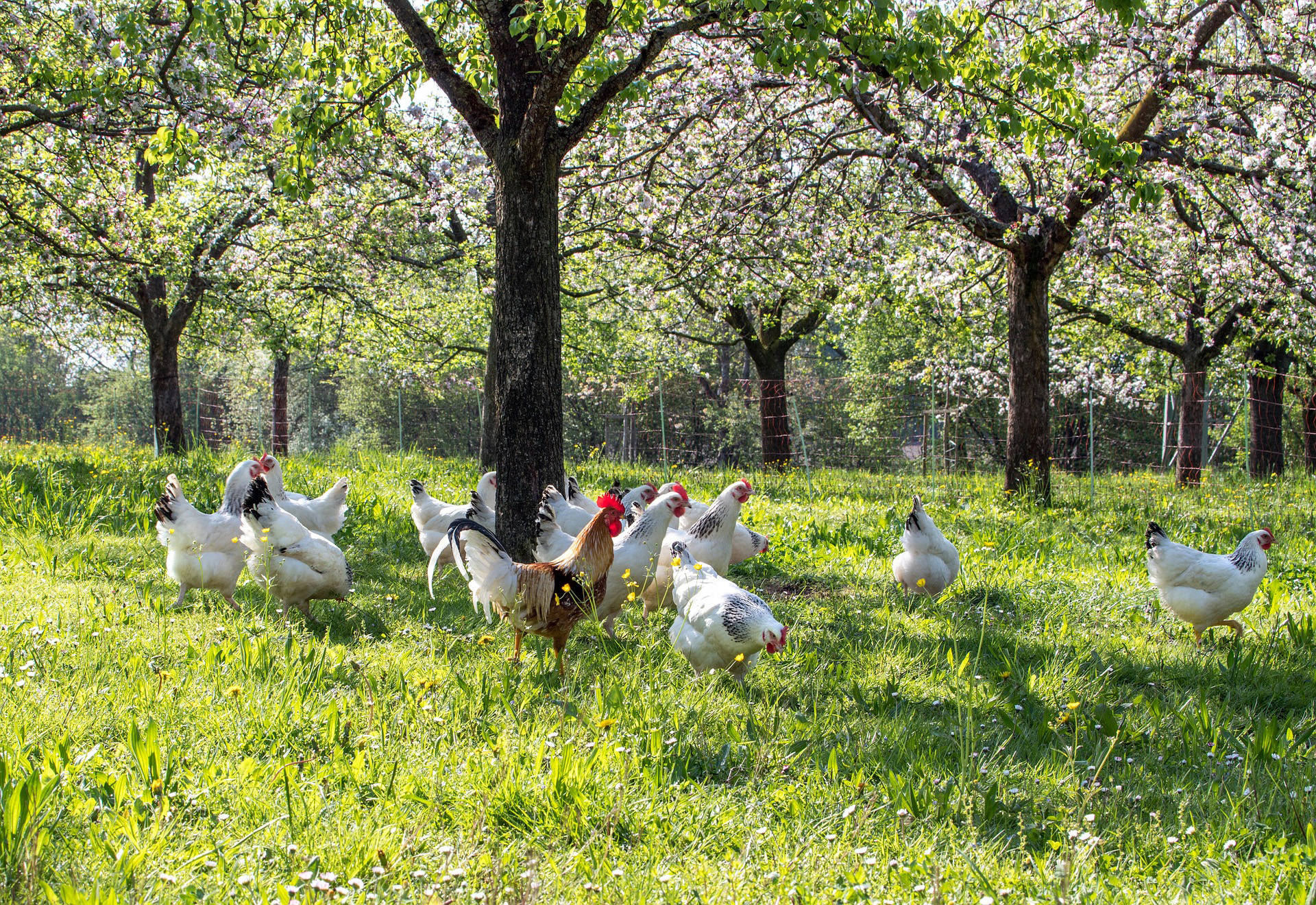Eko 100 – the story of our bestseller, born out of necessity and passion.
At KROPPER, it all began with the dream of a modern, functional and mobile chicken coop that would truly benefit farmers.
The first models, Eko 225 and Auto-Feeder 225, were our pride and joy. They were reliable, well-designed and successfully found their way into many farms across Europe.
When we sent out offers for our larger models, the same question came up more and more often: ‘Are you planning anything smaller?’ – and so an idea was born that would change more than we could have imagined.

We knew that more and more farmers wanted to start small-scale mobile animal husbandry – economically, but without compromising on comfort and quality. So, together with our designer, we developed Eko 100 – a compact, easy-to-use and fully professional chicken coop. We never imagined that this model would change our company so much.
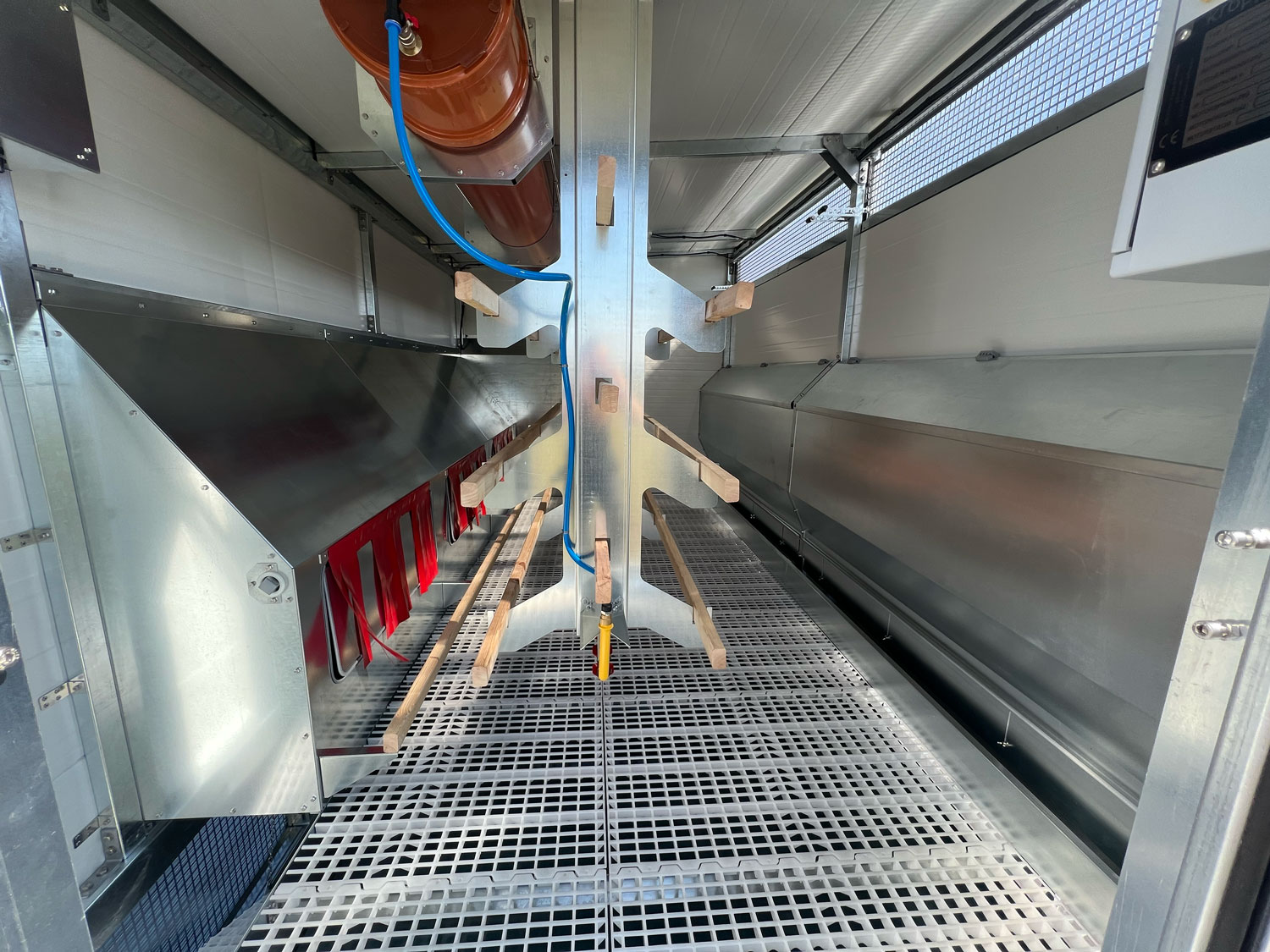
Simple. Robust. Well thought-through. The Eko 100 is not a ‘small version of a larger model’.
It is a project that has been thought through from the ground up: a mobile chicken coop for 106 organic chickens or 160 free-range chickens that combines reliability with intuitive operation.
Standard features include:
• a semi-automatic drinking and feeding system with 16 nipple drinkers, a 220-litre water tank and a 790-litre feed tank,
• electric flap system and LED lighting.
• touch control panel (DE/EN/PL/CZ)
• spelt nests and an emergency nest opening function.
• manure disposal system with conveyor belts,
• galvanised steel construction and walls made of 40 mm thick PIR panels with excellent insulation properties.
Details such as hinges and handles from Elesa + Ganter and control components from Siemens and Schneider guarantee years of reliability.
No wonder that the Eko 100 quickly gained popularity in Europe and became our bestseller. KROPPER chicken coops can already be found in ten European countries: Germany, Austria, Belgium, Italy, Czechia, Lithuania, Latvia, Switzerland, Slovenia and, most recently, Poland.
It is a unique feeling to see how an idea that originated in our production hall near Wrocław has found its way into so many farms – from the Alps to the Baltic Sea.
At the same time, we know that our customers are behind this success. Their expectations and suggestions have enabled us to develop a model that combines simplicity with practical solutions.
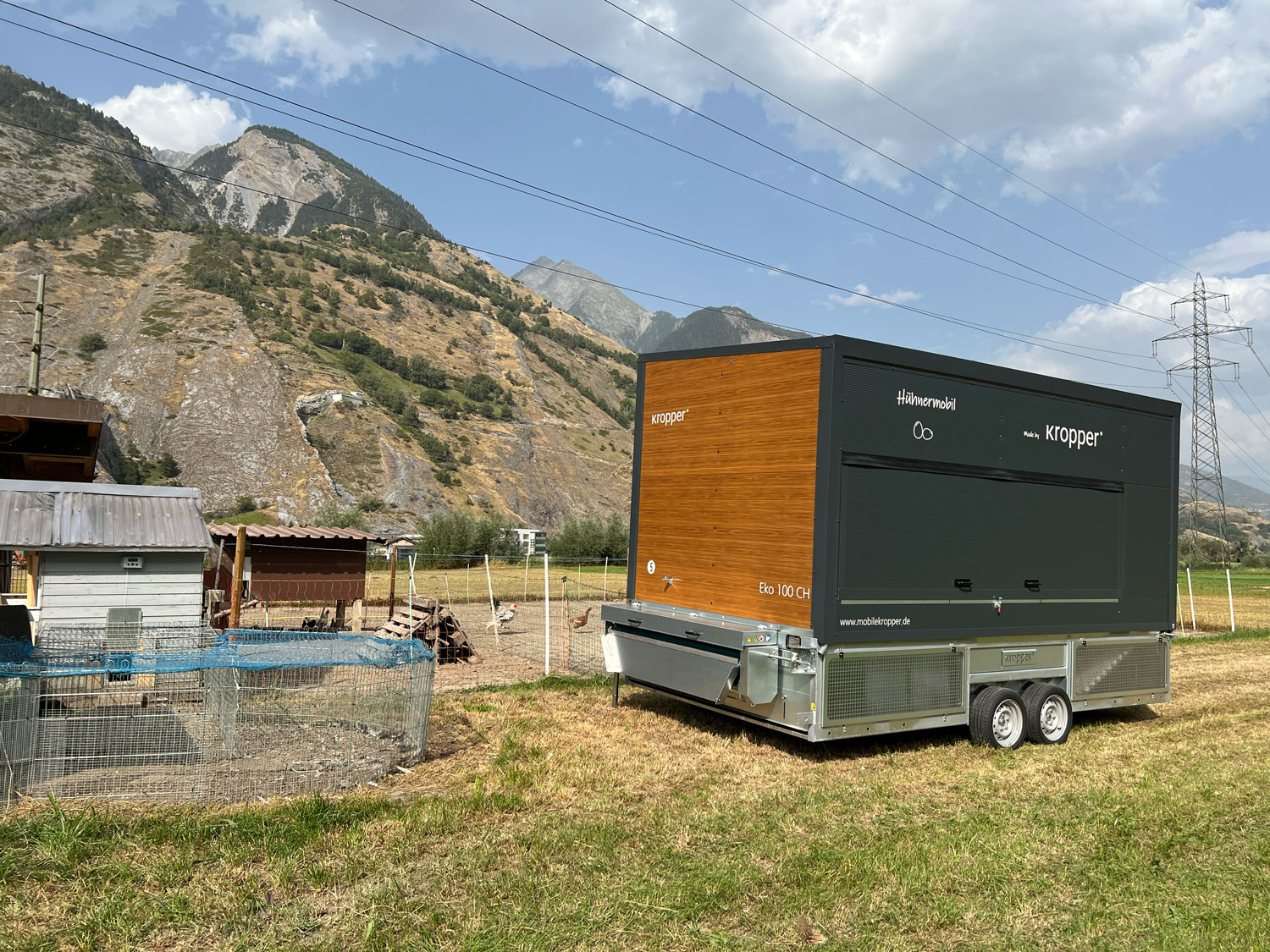
Eko 100 CH: Swiss precision, European quality.
Over time, the Eko 100 has gained particular recognition in Switzerland. Farmers there appreciate its durability, well-thought-out design and ease of use. To meet Swiss requirements, we have developed a special version of the Eko 100 CH that is adapted to local animal welfare regulations. In 2025, this model received official certification from the BLV (eng. Federal Food Safety and Veterinary Office). This confirms that our design fully complies with Swiss standards for the keeping of laying hens.
This is a major step forward – both for us and for our customers in Switzerland, who can now use our barn legally and without restrictions in conventional farms. We are very proud of this. But this is only the beginning: we are currently working on adapting the model fully to the requirements of Bio Suisse so that our customers in Switzerland can practise certified organic farming without restrictions.
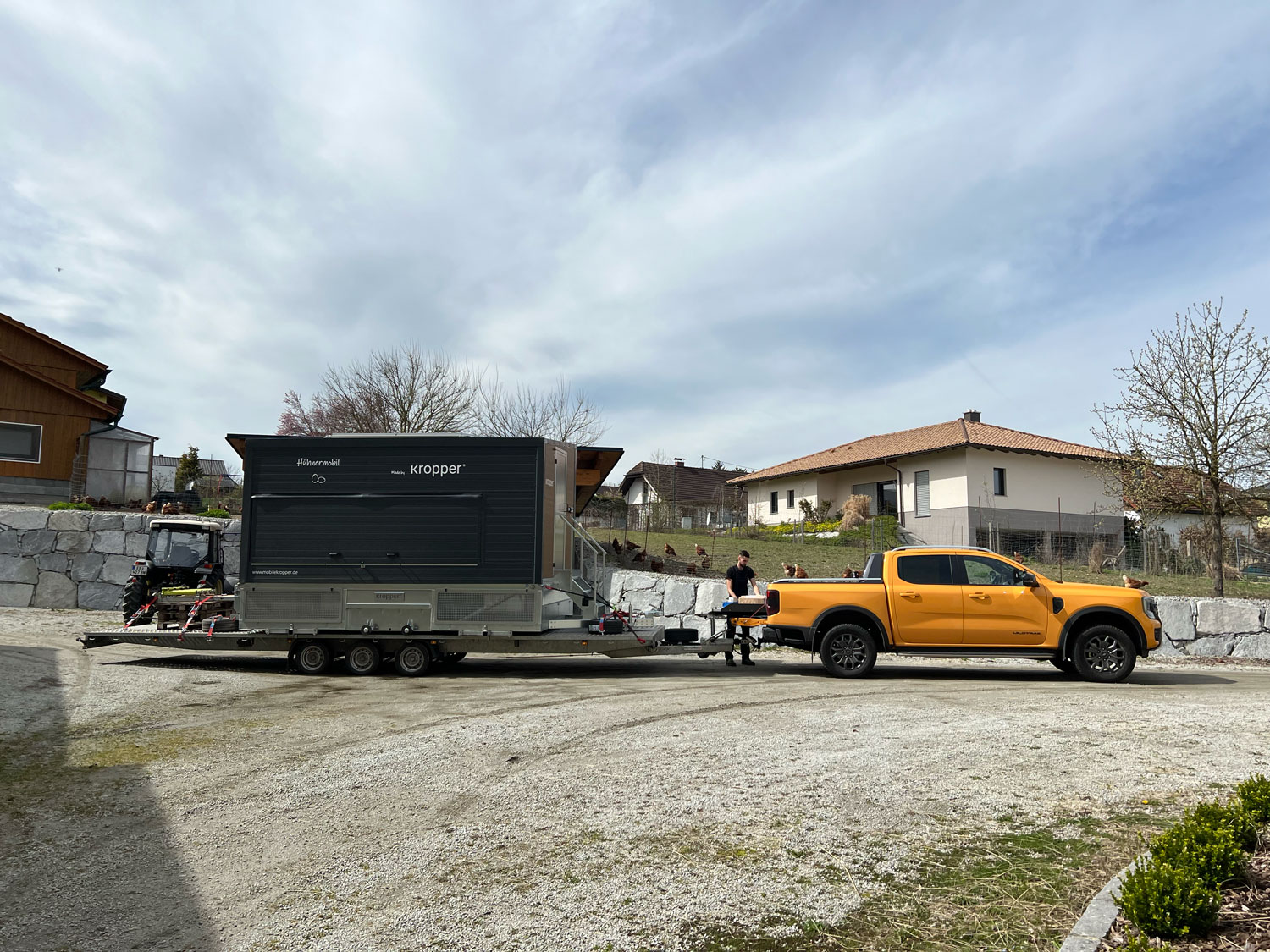
The trust that drives us every day
When we look at our production hall today and see the next Eko 100 chicken coops waiting to be transported, we are very grateful.
Thanks to you – our customers and partners – this model has become a symbol of quality that farms across Europe trust.
It is your needs and ambitions that drive our development.
Thanks to you, Eko 100 is not just a product, but proof that strength lies in simplicity and passion.
We thank you for your trust and for joining us on this journey!
The KROPPER team




















